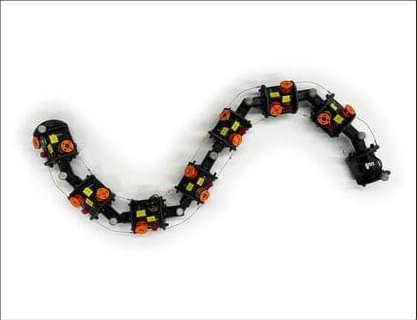To advance our overall understanding and discover principles of mechanical intelligence in limbless locomotion and to understand the potential role of bilateral actuation specifically in mechanical control, we took a comparative biological and robophysical approach using two complementary models: a biological model, the nematode C. elegans, and a robophysical model, a limbless robot incorporating a bilateral actuation scheme that permits programmable, dynamic, and quantifiable body compliance (Fig. 1B). This compliance governs the passive body-environment interactions in the horizontal plane that allow mechanical intelligence. Because separating neural and mechanical aspects of control is challenging in a freely locomoting living system, we used the robot as a model (22, 24, 49, 50) that then allowed mechanical intelligence to be isolated from active controls and to be systematically tuned and tested.
Using comparisons between the kinematics and locomotor performance of our biological and robophysical models, we show that mechanical intelligence alone is sufficient for an open-loop limbless robot to reproduce locomotory behavior of nematodes. Mechanical intelligence simplifies controls in terrestrial limbless locomotion by taking advantage of passive body-environment interactions that enable heterogeneity negotiation, thereby stabilizing locomotion. Further, we show that a simple active behavior inspired by nematodes takes advantage of mechanical intelligence to enhance locomotion performance even further. Our method and results not only provide insight into the functional mechanism of mechanical intelligence in organismal limbless locomotion but also provide an alternative paradigm for limbless robot development that simplifies control in complex environments.
